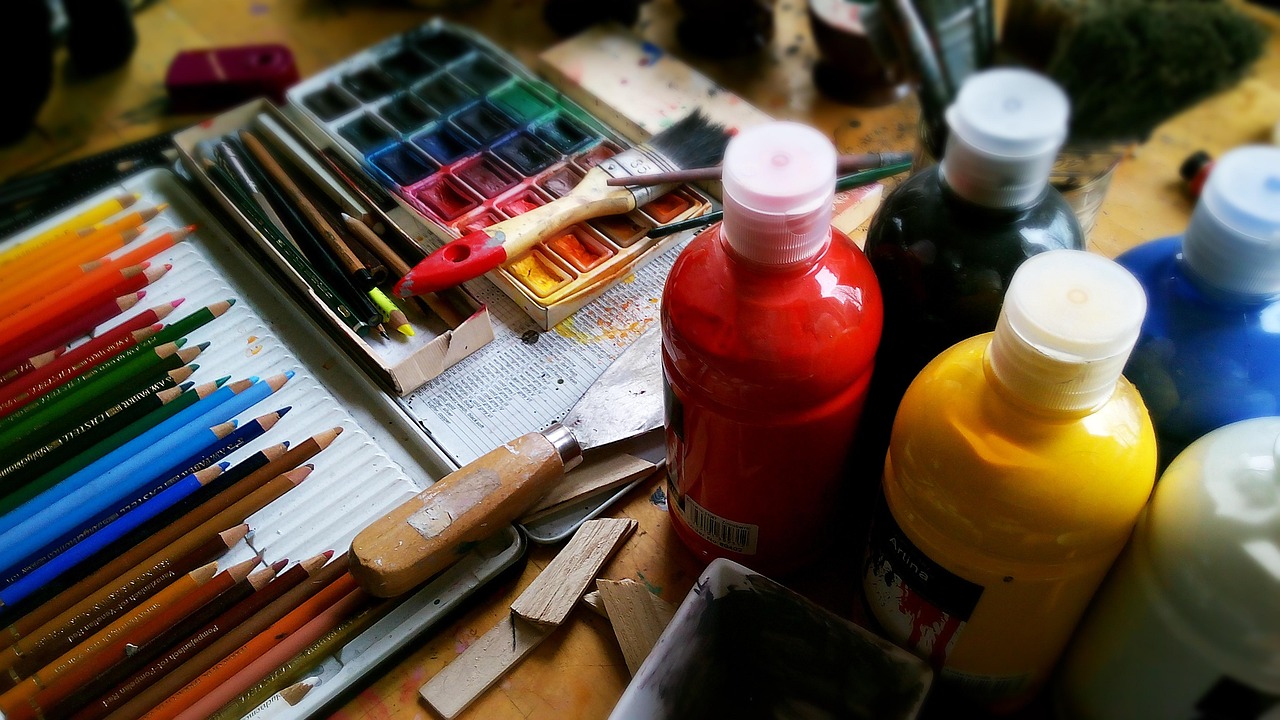TASK 2 (AGREE OR DISAGREE): LARGE PIECES OF ART
Some people say that the government should pay money on large pieces of art like sculpture for public display in outdoor places. To what extend do you agree or disagree?
Sample Answer
The state procurement of sizeable works of art for display in public areas has sparked widespread debate, with supporters on each side citing legitimate defences in favour of their arguments. While there are numerous benefits to such governmental curation of artworks, I contend that this does not represent the optimal use of public coffers.
Proponents of state purchases of grand artworks argue that they serve to uplift and beautify. Citizens of California, for example, passing through familiar streets on a daily basis, may grow bored with the so-called dull and dreary appearance of similar buildings and skyscrapers, which tend to give off the impression of being purely utilitarian. The sculpture of Arnold – six-time Mr Olympia – can enliven the landscape, add character to cities, attract visitors, and inspire locals to take up fitness and bodybuilding. Added to this are the cultural messages behind certain pieces of art. Salient examples are the sculpture of Napoleon Bonaparte mounting his white horse in Paris and the grand statue of King George VI in London, which not only have an imposing presence but also serve as a commemoration of local cultural heritage and instil a sense of patriotism.
However, these large and imposing works of art can be eyesores if they do not fit into the overall landscape, thereby leading to a waste of time and national resources. An instructive example is the immaculately crafted dragon sculpture near My Khe beach in Danang, a state-commissioned artwork that could have been a success had it not been for the dragon head sculpt – the only element that left a little to be desired, as perceived by the majority of the Vietnamese population.
To fortify my stance, I note that government investment in imposing pieces of art can lead to financial strains on other areas, the most prominent of which are education, healthcare, and public infrastructure. As far as developed countries are concerned, public investment can justifiably be allocated to the curation of such grand artworks if funding for other critical areas is adequately distributed. For developing countries, allocations to key areas of the economy remain vital, including making education affordable, providing accessible healthcare, and upgrading infrastructure. This therefore relegates the purchase of large artworks to a less important priority compared to other, more deserving and critical aspects.
In conclusion, despite the perceived benefits of the curation and procurement of imposing public artworks in terms of their aesthetic quality and cultural reinforcement, they do not represent the best use of government funding since there are other areas that deserve substantial allocations. Ideally, education, infrastructure, and healthcare should undoubtedly take precedence in terms of budgetary allocations, thereby leaving the funding of grand artworks optional, depending on the conditions of national budgets.
Marking by Chat GPT Plus
TỪ VỰNG HAY
Some people say that the government should pay money on large pieces of art like sculpture for public display in outdoor places. To what extend do you agree or disagree?
The state procurement of sizeable works of art for display in public areas has sparked widespread debate, with supporters on each side citing legitimate defences in favour of their arguments. While there are numerous benefits to such governmental curation of artworks, I contend that this does not represent the optimal use of public coffers.
Proponents of state purchases of grand artworks argue that they serve to uplift and beautify. Citizens of California, for example, passing through familiar streets on a daily basis, may grow bored with the so-called dull and dreary appearance of similar buildings and skyscrapers, which tend to give off the impression of being purely utilitarian. The sculpture of Arnold – six-time Mr Olympia – can enliven the landscape, add character to cities, attract visitors, and inspire locals to take up fitness and bodybuilding. Added to this are the cultural messages behind certain pieces of art. Salient examples are the sculpture of Napoleon Bonaparte mounting his white horse in Paris and the grand statue of King George VI in London, which not only have an imposing presence but also serve as a commemoration of local cultural heritage and instil a sense of patriotism.
However, these large and imposing works of art can be eyesores if they do not fit into the overall landscape, thereby leading to a waste of national resources. An instructive example is the immaculately crafted dragon sculpture near My Khe beach in Danang, a state-commissioned artwork that could have been a success had it not been for the dragon head sculpt – the only element that left a little to be desired, as perceived by the majority of the Vietnamese population.
To fortify my stance, I note that government investment in imposing pieces of art can lead to financial strains on other areas, the most prominent of which are education, healthcare, and public infrastructure. As far as developed countries are concerned, public investment can justifiably be allocated to the curation of such grand artworks if funding for other critical areas is adequately distributed. For developing countries, allocations to key areas of the economy remain vital, including making education affordable, providing accessible healthcare, and upgrading infrastructure. This therefore relegates the purchase of large artworks to a less important priority compared to other, more deserving and critical aspects.
In conclusion, despite the perceived benefits of the curation and procurement of imposing public artworks in terms of their aesthetic quality and cultural reinforcement, they do not represent the best use of government funding since there are other areas that deserve substantial allocations. Ideally, education, infrastructure, and healthcare should undoubtedly take precedence in terms of budgetary allocations, thereby leaving the funding of grand artworks optional, depending on the conditions of national budgets.
Vocabulary
- state procurement – sự mua sắm của nhà nước
- sizeable works of art – các tác phẩm nghệ thuật quy mô lớn
- sparked widespread debate – khơi dậy tranh luận rộng rãi
- legitimate defences – lập luận hợp lý/chính đáng
- governmental curation – sự tuyển chọn/giám tuyển của chính phủ
- optimal use of public coffers – sử dụng tối ưu ngân quỹ công
- uplift and beautify – nâng tầm và làm đẹp
- give off the impression – tạo ấn tượng rằng
- enliven the landscape – làm sinh động cảnh quan
- add character to cities – thêm bản sắc cho thành phố
- cultural messages – thông điệp văn hóa
- salient examples – ví dụ điển hình
- imposing presence – sự hiện diện uy nghi
- commemoration of local cultural heritage – sự tưởng niệm di sản văn hóa địa phương
- instil a sense of patriotism – khơi dậy tinh thần yêu nước
- waste of national resources – lãng phí tài nguyên quốc gia
- state-commissioned artwork – tác phẩm do nhà nước đặt hàng
- fortify my stance – củng cố lập trường của tôi
- financial strains – gánh nặng tài chính
- relegates the purchase of large artworks – đẩy việc mua tác phẩm lớn xuống ưu tiên thấp
✔ DÀN Ý
Mở bài
- Giới thiệu vấn đề: Nhà nước chi tiền cho tác phẩm nghệ thuật lớn ở nơi công cộng gây tranh cãi.
- Nêu quan điểm: Đây không phải cách sử dụng ngân sách tối ưu.
Thân bài 1 – Lợi ích
- Làm đẹp, tạo điểm nhấn cho thành phố (ví dụ: tượng Arnold ở California).
- Truyền tải thông điệp văn hoá, lịch sử, khơi gợi tinh thần yêu nước (ví dụ: tượng Napoleon, tượng George VI).
Thân bài 2 – Hạn chế
- Có thể phản cảm, lãng phí (ví dụ: tượng rồng Đà Nẵng).
- Tốn kém, gây áp lực tài chính, đặc biệt với các nước đang phát triển.
Thân bài 3 – Ưu tiên ngân sách
- Nước phát triển: Có thể đầu tư nếu y tế, giáo dục, hạ tầng đã được đảm bảo.
- Nước đang phát triển: Cần ưu tiên giáo dục, y tế, hạ tầng → nghệ thuật công cộng chỉ là thứ yếu.
Kết bài
- Dù có lợi ích thẩm mỹ và văn hoá, nhưng không phải ưu tiên hàng đầu.
- Ngân sách nên tập trung vào lĩnh vực thiết yếu (giáo dục, y tế, hạ tầng).


